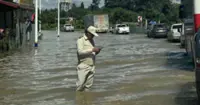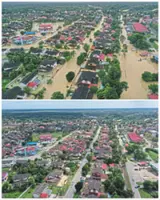High water level at Sungai Klang as a result of heavy rain earlier in the day. Activists say urban development has changed the natural topography of Kuala Lumpur, thus reducing the city’s ability to absorb rainwater. — Filepic
Kuala Lumpur residents are filled with dread each time it rains.
Over the past few months, many parts of the city have been inundated after a downpour, wreaking havoc in its wake.





